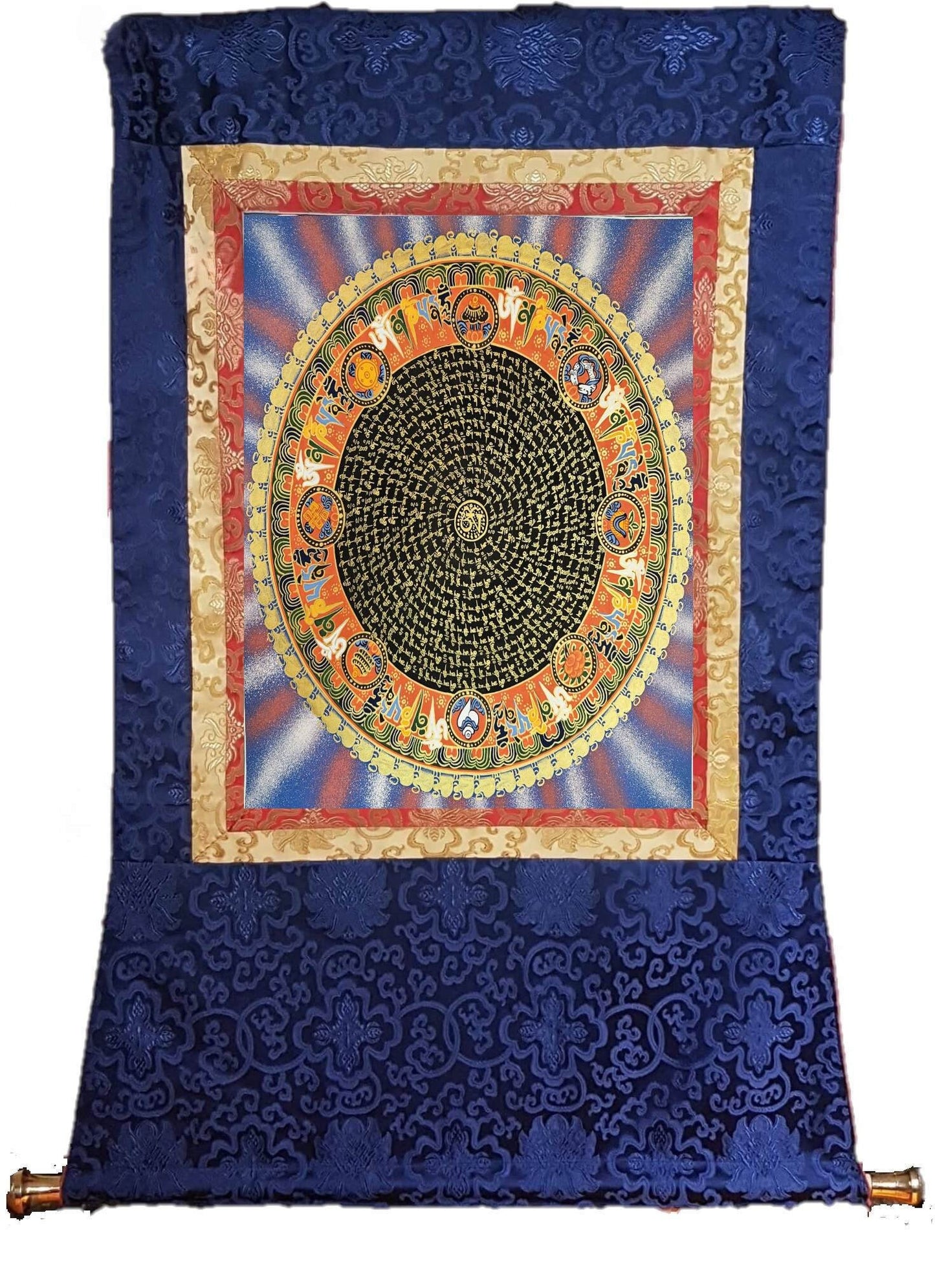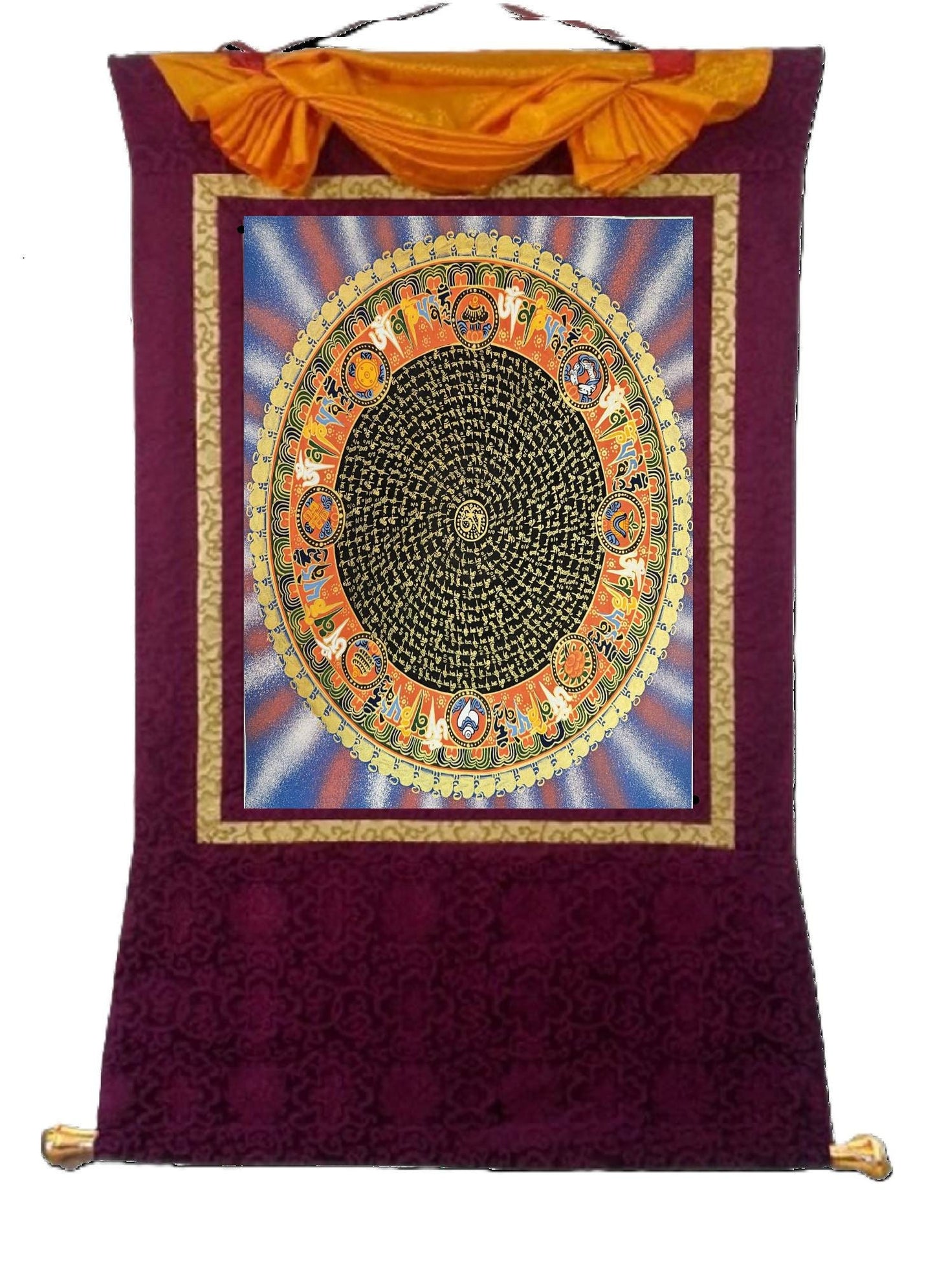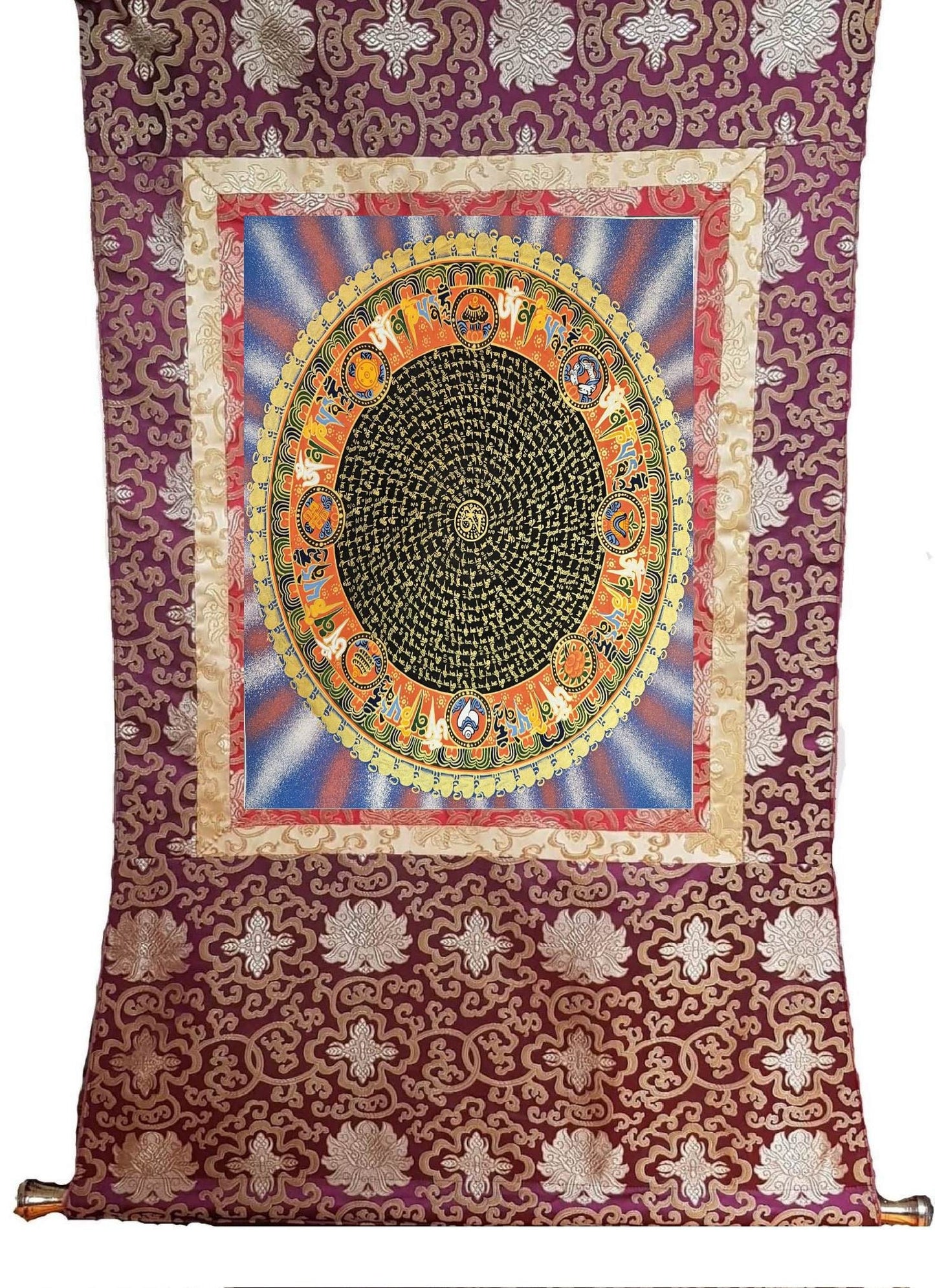1
/
of
6
My Store
349. Mantra Mandala Thangka (Thanka). Free Brocade / Free Shipping.
349. Mantra Mandala Thangka (Thanka). Free Brocade / Free Shipping.
Regular price
$150.00 USD
Regular price
Sale price
$150.00 USD
Quantity
Couldn't load pickup availability
Mantra Mandala
The word “mandala” itself means “circle” and, often, that’s what a mandala looks like. A circle. Circles have a very evocative meaning in Hindu and Buddhist religious traditions. Mandalas arose in Indian and Himalayan religious traditions as artistic ways of representing the spiritual universe. The ancient Hindu scriptures think of time as circular, having a creation period, a period of flourishing existence, and a destruction that leads to another inevitable creation.
In the Indian Hindu tradition, mandalas are also used to depict the spiritual universe, but the word has an additional religious meaning, referring to the ten sections of the Rigveda, one of India’s oldest canonical Hindu scriptures. In Hinduism and many forms of Buddhism, this cycle is constantly occurring and reoccurring.
In Tibetan Buddhist practice, mandalas represent the pure and sacred space consecrated by the power of a buddha or other deity. Through concentrated meditation on the mandala, a monk learns information about the deity that is conveyed in the art. Beyond this, he strives to “enter” the mandala, not only invoking the qualities of the deity, but internalizing them himself.
As a visual representation of a sacred space, mandalas serve several functions in Tibetan Buddhism:
• Mandalas are used in rituals to initiate monks.
• Mandalas are meditation tools to focus the mind.
• Mandalas are made and destroyed to represent impermanence.
• Mandalas are sold to spread awareness of Buddhism and Buddhist philosophy.
In Buddhism, all beings can attain enlightenment, or “Buddhahood.” In this way, most Buddhists believe that the Buddha was not a divine being in the same way that Jesus Christ is usually thought to be the physical incarnation of God. Rather, the Buddha was an ordinary man who achieved a special transcendent state called “nirvana,” or enlightenment.
Chants and mantras are a fixture of meditation, rituals and other religious activity. Technically they are not prayers but are reminders of the beneficence of The Buddha, Dharma and the monk community. Buddhists appeared to have borrowed the practice from Hindus who used mantras to call their gods before prayers. Repeating chants is said to relax the body and refreshes the mind. Monks often chant in low moaning voices to the rhythm of sticks striking an instrument that looks like a wooden cowbell. Many Buddhist mantras incorporate the word “OM”, the most powerful and mystical word in Buddhism. It is "a combination of three Sanskrit sounds that sum up the three-in-one nature of the universe. These chants are so sacred that just writing them or carving them in stone...is regarded as much more pious than putting up statues."
The Mantra inscribed is “Om Mani Padme Hum ("Hail to the Jewel in the Lotus")”, which has also been translated to mean "I invoke this path to experience the universality, so the jewel-like luminosity of my immortal mind will be unfolded within the depths of the lotus-center of awakened consciousness and I be wafted by ecstasy of breaking through all bonds and horizons."
Size:
Size without Brocade: 20 inches by 20 inches
Shipping:
We ship within 2 business day.
DHL Shipping: 5 to 8 business days with tracking number.
Insurance against loss.
We do wholesale too.
Our one and only priority in this business is to provide "Hassle free Customer Satisfaction". We have "Quality Products" with "Cheapest Price" in the market.
Please contact us to resolve any issues. Contact us via email before leaving any negative or neutral comments. We promise you that we will resolve any issues.
Please confirm the return address with us before returning the product.
Share











